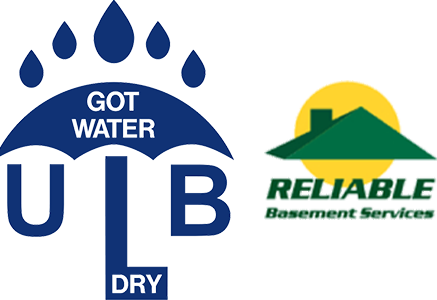This post was updated on 7/19/17 to reflect the latest available information.
Since 1900, the average annual amount of rainfall and precipitation around the Great Lakes has increased 11 percent, reports the University of Michigan. Unfortunately, increased precipitation can spell disaster for homeowners who have not previously hired a Chicago basement waterproofing contractors, to prevent the growth of mold, mildew and bacteria beneath their home. While most homes have a full basement, there are many with attached crawl spaces. Not to mention, some have no basement at all, just a crawl space. As a result, home owners need to know a few things about basement waterproofing in Park Ridge and the surrounding areas.
Why Is Basement Waterproofing in Chicago Critical for Homes With Crawl Spaces?
Unlike a full basement, a crawl space was never intended to be anything more than access to the heating and plumbing or rough storage at best. That being said, adequate ventilation was not a concern in the design of most crawl spaces, nor was basement waterproofing in Chicago for such spaces.
Smaller vents are incorporated into the top rim of the foundation in key locations around the crawl. However, it is up to the home owner to open and close these with seasonal changes, opening the proverbial to door to the entry of water. Over time the vent assembly itself rusts or deteriorates to such a degree that it no longer functions correctly. Therefore, hiring a waterproofing contractor for Park Ridge and affected homes may be necessary.
Can Concrete Slabs or Dirt Floors Prevent the Musty Odor?
Although most crawl spaces are one of two basic types of in need of Naperville basement waterproofing, including those with concrete slabs and those with dirt floors, both designs are susceptible to mold and mildew.
Most home owners believe that the concrete floor slab will have taken care of the problems. This is not true. Concrete is naturally porous and will allow the moisture to bleed through, even in periods of decreased rainfall in the Great Lakes’ area. Furthermore, the presence of wall cracks only exasperates the issue. However, without proper ventilation, moisture will condense and lead to higher levels of humidity within the crawl space.
Higher levels of humidity breed mold. Left untreated, mold starts to destroy the integrity of the general structure, including wooden floor joists. As the air from the crawl naturally rises into the upper living areas, it brings all the humid, mold-laden air with it, creating an uncomfortable and unhealthy musty odor. However, a Lombard basement waterproofing contractor can effectively seal concrete, eliminating the ability of moisture to rise through the material. Consequently, the discomfort and hazards of musty smells and harmful spores from mold are prevented from forming in the first place.
Dirt crawl spaces are even more susceptible to this issue. Since the soil will never dry completely, it provides an added source of moisture, speeding the growth of mold and other bacteria.
By containing the source of these problems below a heavy-duty vapor barrier, a type of basement waterproofing in Oak Brook and nearby, a quality crawl space encapsulation is created. This is one of the most cost-effective remedies to these problems. While the basement waterproofing applications for dirt and cement crawl spaces are slightly different, the premise is the same.
How Does a Basement Waterproofing Contractor in Lombard “Waterproof” a Craw Space?
All existing vents are sealed shut. This eliminates seasonal changes in air temperature and humidity. Next, the space between each of the rim joist are filled with foam insulation. Any areas of water entry are repaired with foam insulation as well.
An epoxy injection treatment is used to treat wall cracks, and an interior drain tile with sump is needed when hydro-static pressure is responsible for the entry of water through the crawl’s floor. Afterward, a heavy-duty, re-enforced polyethylene vapor barrier (12 to 20 mm) is installed in two stages.
- The first application will extend from just below the sill plate down to and across the floor.
- The second piece is laid across the floor, overlapping the wall membrane. To be truly effective, all overlaps and through-barrier penetrations are sealed with a seam tape.
The same process is used for dirt slabs, but it includes the additional, following changes:
- A perimeter drain tile and sealed sump are installed to remove the moisture in the soil.
- To help vent soil gases, a passive air movement system is installed by tapping into the drainage line with a series of through-wall vents.
- To encourage air movement, a solar powered fan is installed in conjunction with the venting drawing the contaminated air out of the home.
- Felt paper is laid over the tile and soil prior to the vapor barrier going down. A small opening in the felt will aid in air movement under the vapor barrier. While some companies will install a high-capacity de-humidifier, we suggest the use of an E-Z breathe ventilation system. This helps remove any remaining moisture and gases. When lower air temperature in the crawl is of great concern, a foil-backed insulation is installed to the underside of the floor joist as well.
Take Back Control of Your Home’s Crawl Space With Basement Waterproofing in Lombard.
Your home is among your prized positions, but failure to prevent moisture and humidity from entering the crawl space can lead to costly stabilization repairs and health risks to your family. Don’t let moisture in your crawl permeate your home with a damp and musty smell when a crawl space and basement waterproofing contractor in Chicago can stop the problem today. Contact ULB-Dry Waterproofing online, or give us a call at 1 (708) 978-7558.





